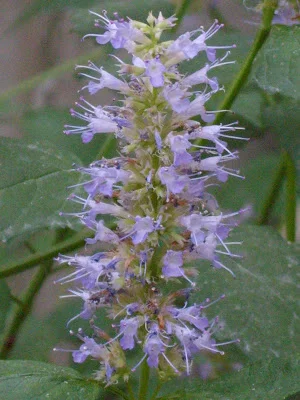Purple Giant Hyssop, Wrinkled Giant Hyssop, Korean Mint, Blue Licorice, huò xiāng (藿香), bangsnnip (방아잎), Patchouli herb--whatever regional name is chosen, they all refer to the same plant: Agastache rugosa (Fisch. & C.A.Mey.) Kuntze. For purposes of this post, the two most abundant names I found were (Purple) Giant Hyssop and Korean Mint, hence the top-title billing.
The Whomping Willow as the World Tree
Forewarning to all ye who enter here: Thar be spoilers on this page. So in the event you have somehow not yet read or watched anything of the Potterverse, you have been warned. Let us proceed.
The World Tree, in its many forms, is often depicted with the Overworld, the branches, representing the future, the spirit realm, and sometimes thought and possibility. These are all unknown quantities most of the time and often thought to be subject to change based on current events.
The Power of Growing Things
Getting out in nature is therapy, a form of self-care. People often say that they need to "go be in nature." Where is this nature? Is it the mountains, tall trees a sheltering canopy overhead? Is it the violent waves crashing against a battered rocky shoreline? Perhaps "nature" is the expansive park in your town square, home to childhood games and Sunday picknicks.
The Turning Seasons: Plants, Death, and Rebirth
Today is Easter, the time when in the Christian tradition, someone who was once presumed deceased is reborn into a new, but strikingly similar form. Yesterday was World Transgender Awareness Day, celebrating a community so often misunderstood, harassed, or ignored--a community whose very nature calls out in an expression of change, ideally able to embrace the individual's truest self. On the Spring Equinox, March 20, was Ostara, the transition between the hibernation and death of winter into the rebirth and new life of spring. I find it apt that all three of these events occur during a liminal period, not entirely one or the other--the dusk of one season and dawn of the next.
Houseleeks, Hens, and Chicks (Sempervivum)
There are many species in the Sempervivum genus, each unique and with particular properties. Noted by Linnaeus in 1757, the genus name translates to "always living," a reference to the plants' hardy, drought-tolerant nature, enabling it to survive in both intense heat and frost. They are also known as houseleeks, hens, chicks, or hen's nests in some areas.
Siskiyou Lewisia and Cliff Maids (Lewisia cotyledon)
The Golden Barrel Cactus (Echinocactus grusoni)
Today, we'll be talking about the ever-lovely Golden Barrel Cactus (Echinocactus grusoni), first described by Hildmann (1891). I will admit that the barrel cactus has always been a favorite of mine. In retrospect, that is likely because it looks much like a cuddly pillow (unlike the soft-spined Paraguan and Brasilian native, (Notocactus leninghausii), but I digress.








